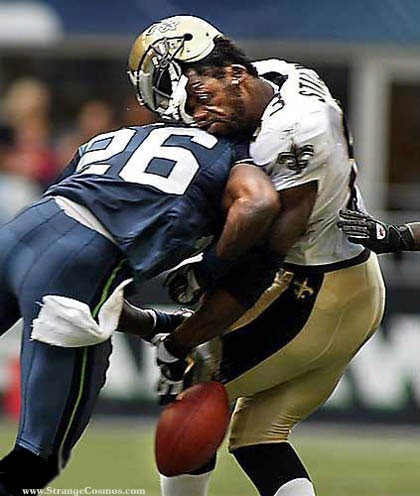 By now many know friends or family that have been effected by a concussion. This brain injury has garnered lots of health and media attention,and rightly so. The long term implications can be very serious ,leading to chronic pain, depression ,and long term disability! Most post-concussion symptoms such as headaches, sensitivity to noise and light, dizziness, fatigue, and memory problems usually go away within about 7-10 days after the injury but sometimes post-concussion symptoms can last up to about 3 months or longer.
By now many know friends or family that have been effected by a concussion. This brain injury has garnered lots of health and media attention,and rightly so. The long term implications can be very serious ,leading to chronic pain, depression ,and long term disability! Most post-concussion symptoms such as headaches, sensitivity to noise and light, dizziness, fatigue, and memory problems usually go away within about 7-10 days after the injury but sometimes post-concussion symptoms can last up to about 3 months or longer.
Recent research from American Journal of Neuroradiology; Aug 2016,found a strong correlation between role of the cervical spine in the development of post-concussion syndrome. The authors of this study sought to find if the development of post-concussion syndrome was linked to identifiable changes in the neck musculature.
Smaller cross-sectional area of the rectus capitis posterior minor was correlated with the following:
- Greater symptoms severity
- Longer recovery time
- Poorer verbal memory performance
- Post-concussive headaches
To put it simply, the patients with the worst symptoms and recovery after a concussion had the most atrophied[weakest] rectus capitis posterior minor muscle.
Though the muscle is small, it has the highest density of proprioceptive[position sensors] fibers of all of the upper neck muscles. These proprioceptive fibers are powerful inhibitors of pain which can explain why headaches or pain issues persist. Loss of this proprioception can also cause sensory imbalance in the brain leading to dizziness or balance problems.
The rectus capitis posterior minor is also unique in that it has an attachment into dural[brain tissues] stuctures. The muscle plays an important role in preventing compression of the dura mater when the neck goes into extension. The dura is supplied by C1-C3 nerve roots which signal into a complex network of nerves into the neck, which regulates pain sensation for the head and neck. Head injuries can cause Structural shifts of the neck and continue to weaken this muscle and disturb it’s normal function in protecting the dura and it’s pain sensitive fibers.
This study supports the clinical results I’ve seen in practice for the past 23 years with post-concussion patients.When we correct the underlying structural shifts of the neck, the weakened muscles start to rehabilitate themselves and start to stimulate the required brain nutrition known as PROPRIOCEPTION! Healing the neck helps heal the brain!!
If you would like to receive a complimentary consultation with Dr.Mankal to determine if we can help, email us at drmankal@rogers.com.At our office a consultation is a conversation,not a commitment!
